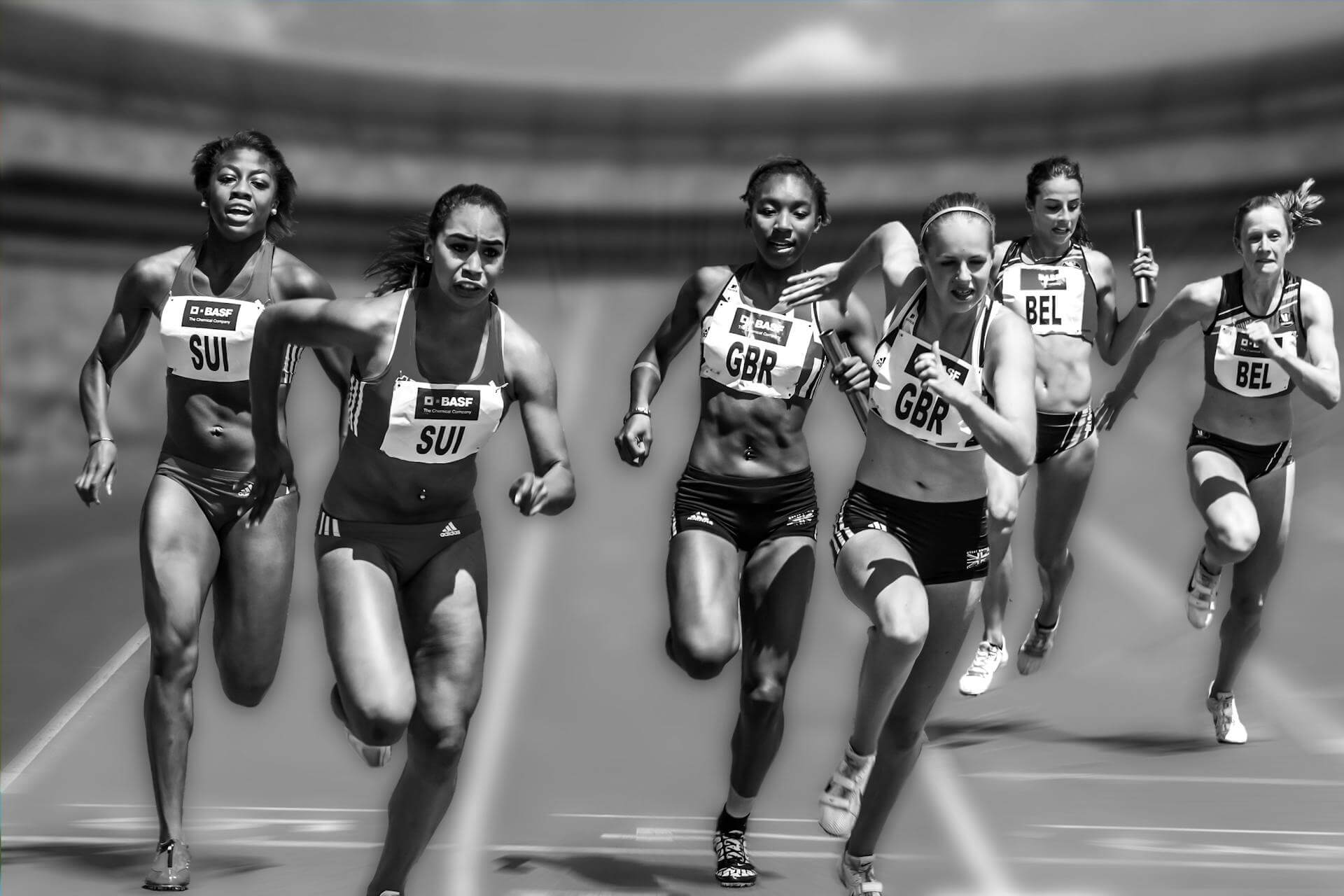The menstrual cycle is a complex physiological process that influences various aspects of a female athlete’s body, including energy metabolism, muscle strength, endurance, and recovery. Understanding the effect of the menstrual cycle and its different phases on athletic performance can help female athletes optimize their training, prevent injuries, and improve performance outcomes.
This article will break down how each phase of the menstrual cycle may affect exercise performance, discuss the impact of hormonal fluctuations on strength and endurance, and provide practical insights for female athletes and coaches.

What Are the Phases of the Menstrual Cycle and How Do They Affect Physical Performance?
The menstrual cycle consists of the follicular phase, ovulation, and the luteal phase. Each of these phases is characterised by changes in female sex hormones, which may affect performance in different ways.
- Follicular Phase (Days 1–14): Estrogen levels gradually increase, potentially improving endurance and muscle strength.
- Ovulation (Day 14): Estrogen peaks, which may enhance performance in activities requiring coordination and explosiveness.
- Luteal Phase (Days 15–28): Progesterone rises, leading to increased fatigue, water retention, and changes in energy metabolism.
Understanding the phase of the menstrual cycle is crucial for tailoring training programs and optimising performance outcomes.
How Does the Follicular Phase Influence Exercise Performance?
During the early follicular phase, female sex hormone concentrations are at their lowest, potentially impacting strength and endurance. However, the mid-to-late follicular phase sees rising estrogen levels, which may improve performance in endurance sports. Research suggests that elite female athletes may experience optimal endurance performance during this phase.
What Happens to Athletic Performance During Ovulation?
Ovulation is a critical period where estrogen peaks, potentially improving reaction time and muscle contractility. However, increased ligament laxity may increase the risk of injuries, particularly in female soccer players and team sport athletes.
How Does the Luteal Phase Affect Performance?
The luteal phase is characterised by rising progesterone levels, which may affect thermoregulation, increase fatigue, and impact performance in endurance sports. Female athletes may also experience menstrual symptoms such as bloating/water retention, fatigue, and mood changes, which can further impact performance.
The Menstrual Cycle and Strength Training: How Does Phase Influence Gains?
Fluctuations in female sex hormones throughout the menstrual cycle can influence muscle recovery, hypertrophy, and strength adaptations. Strength adaptations may be optimised by periodising training according to menstrual cycle phases. Some studies suggest that resistance training during the follicular phase leads to better strength gains due to increased estrogen levels supporting muscle protein synthesis.
Does the Menstrual Cycle Affect Endurance Performance?
Studies on endurance performance in elite athletes suggest that different menstrual cycle phases may impact aerobic and anaerobic performance. Elite female athletes may experience decreased endurance performance in the luteal phase due to higher energy expenditure and altered carbohydrate metabolism. Strategies such as adjusting hydration and nutrition can help mitigate these effects.
How Does the Menstrual Cycle Affect Team Sport Athletes?
Research on female soccer players shows that performance in eumenorrheic athletes may fluctuate across the menstrual cycle. Understanding these changes can guide training adaptations for team sport athletes.
What Role Do Female Sex Hormones Play in Recovery and Injury Risk?
Fluctuations in female sex hormones like estrogen and progesterone may impact recovery, muscle soreness, and injury susceptibility. For example, ACL injuries are more common during ovulation due to changes in ligament stiffness. A 2021 systematic review found that knee ligament laxity and ACL injury risk may increase during the ovulatory phase, with hormonal contraceptives potentially reducing this risk. A 2023 study reported that non-contact ACL injuries in female athletes occur more frequently during the ovulatory phase, possibly linked to hormonal effects on ligament laxity.
Can Tracking the Menstrual Cycle Improve Performance?
Tracking menstrual cycles can help female athletes and their coaches adjust training loads, optimise nutrition, and improve performance in different phases of the menstrual cycle. Apps and wearable technology can help monitor menstrual cycle length and predict performance outcomes.
The Impact of Oral Contraceptives on Menstrual Cycle and Performance
Many female athletes use oral contraceptives, which alter hormonal fluctuations. The effects of oral contraceptives on performance in elite athletes remain debated, but they may help regulate menstrual symptoms and provide more predictable performance outcomes. The effects of oral contraceptives on menstrual cycle and performance remain a topic of ongoing research.
Key Takeaways
- Understanding menstrual cycle phases helps female athletes tailor training and optimise performance outcomes.
- The follicular phase is associated with improved strength and endurance, while the luteal phase may lead to increased fatigue and thermoregulatory challenges.
- Tracking menstrual cycles can provide insights into performance fluctuations and aid in training adaptations.
- Hormonal fluctuations impact recovery and injury risk, particularly in sports like soccer where ligament injuries are common.
- Oral contraceptives may provide more predictable performance but can also alter the natural menstrual cycle and exercise response.
By acknowledging the influence of the menstrual cycle on sports performance, female athletes can make informed decisions to enhance their training and competitive success.
For a peek into how training for women can differ greatly from training for men, check out this post – Female Strength Training: Same But Different.
